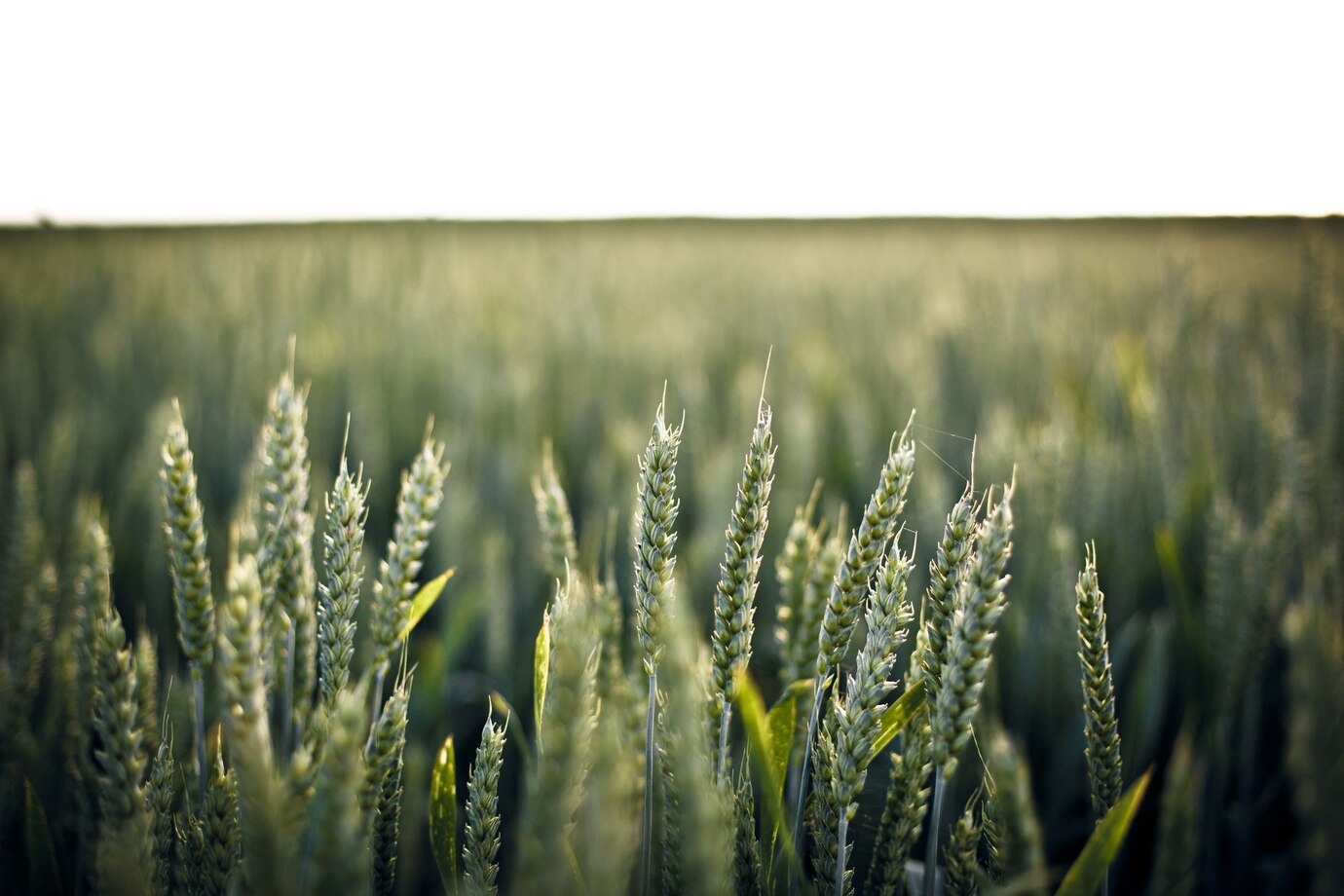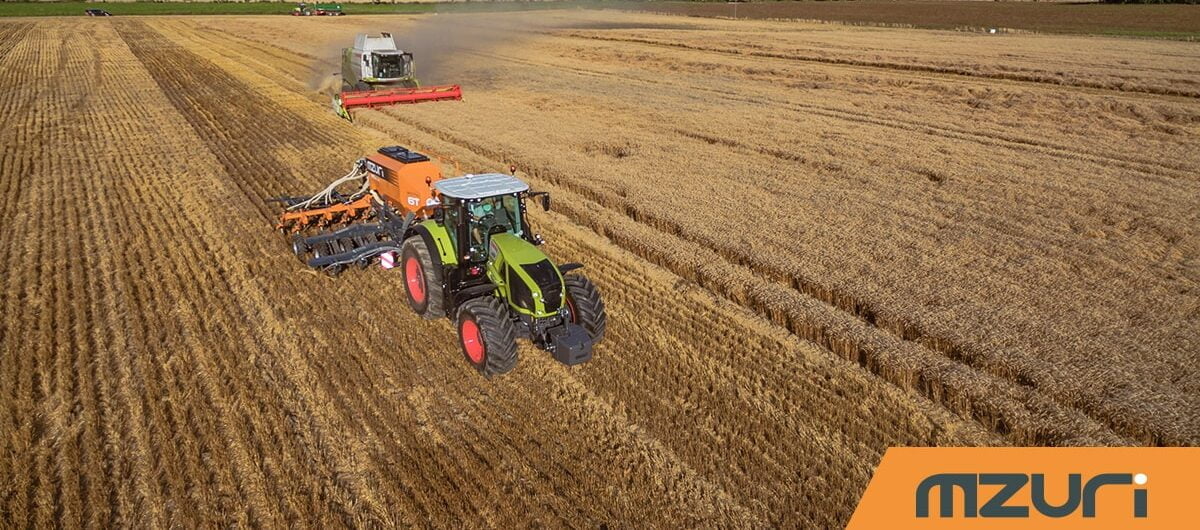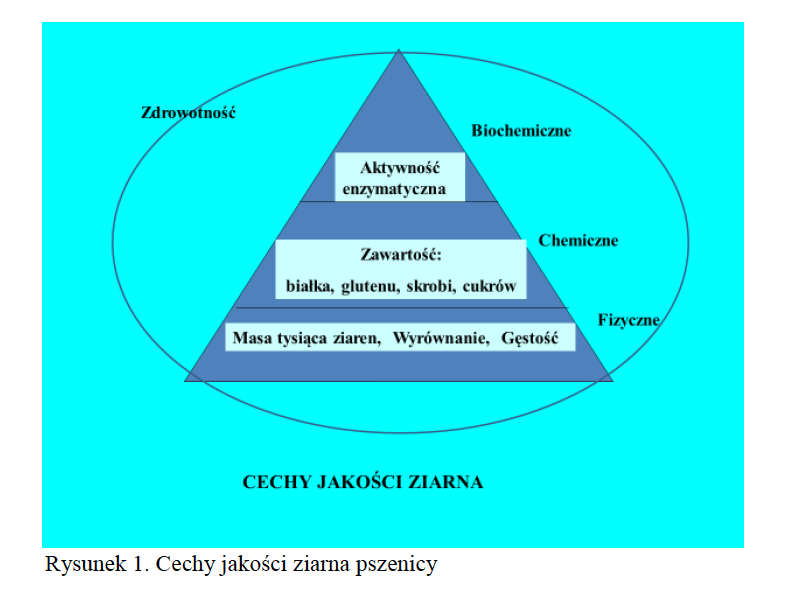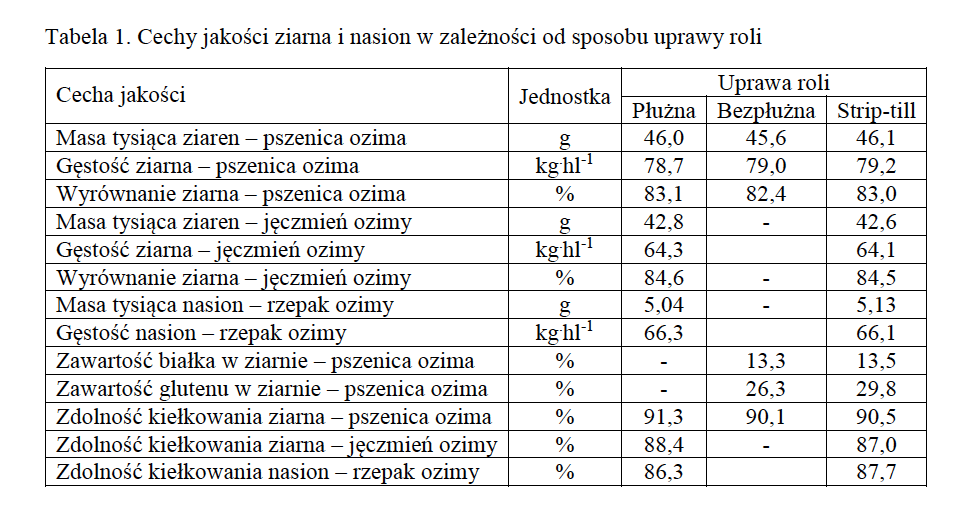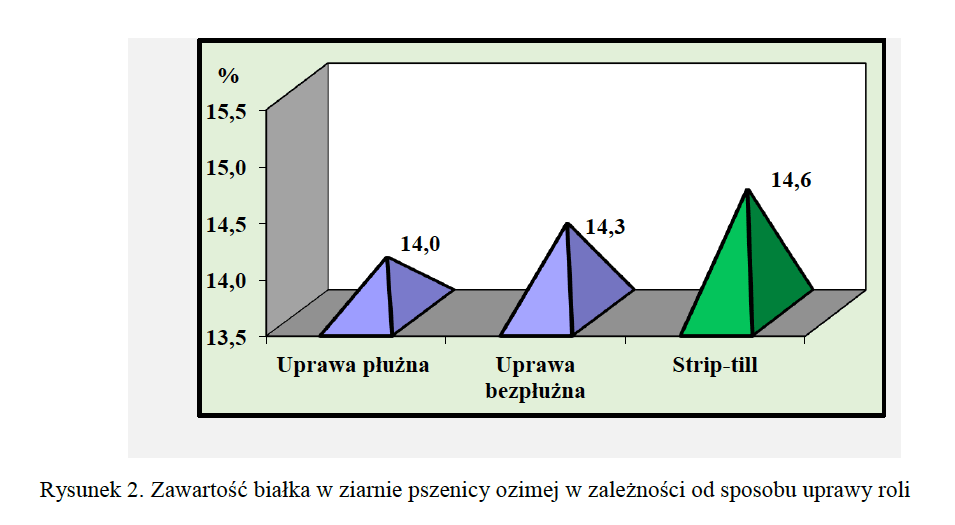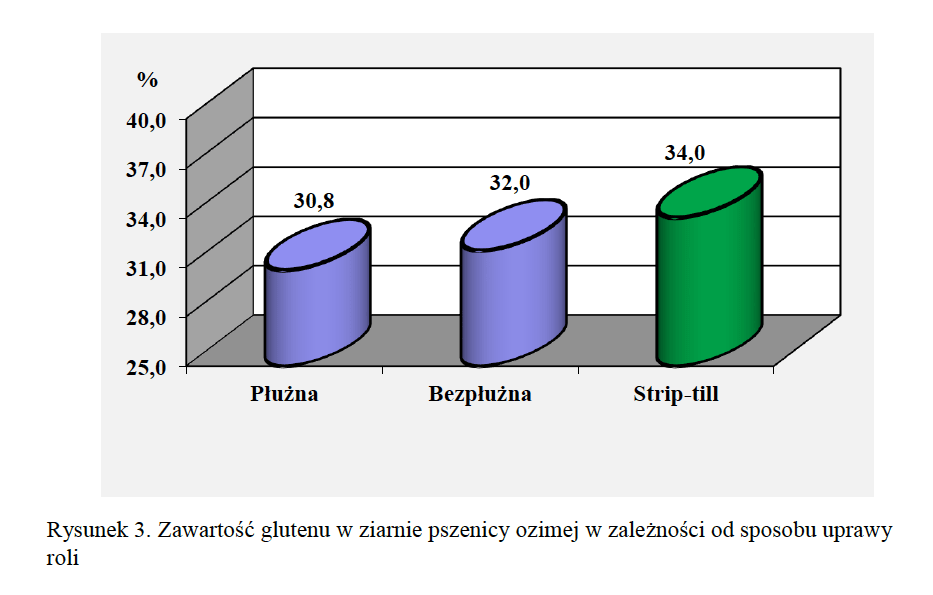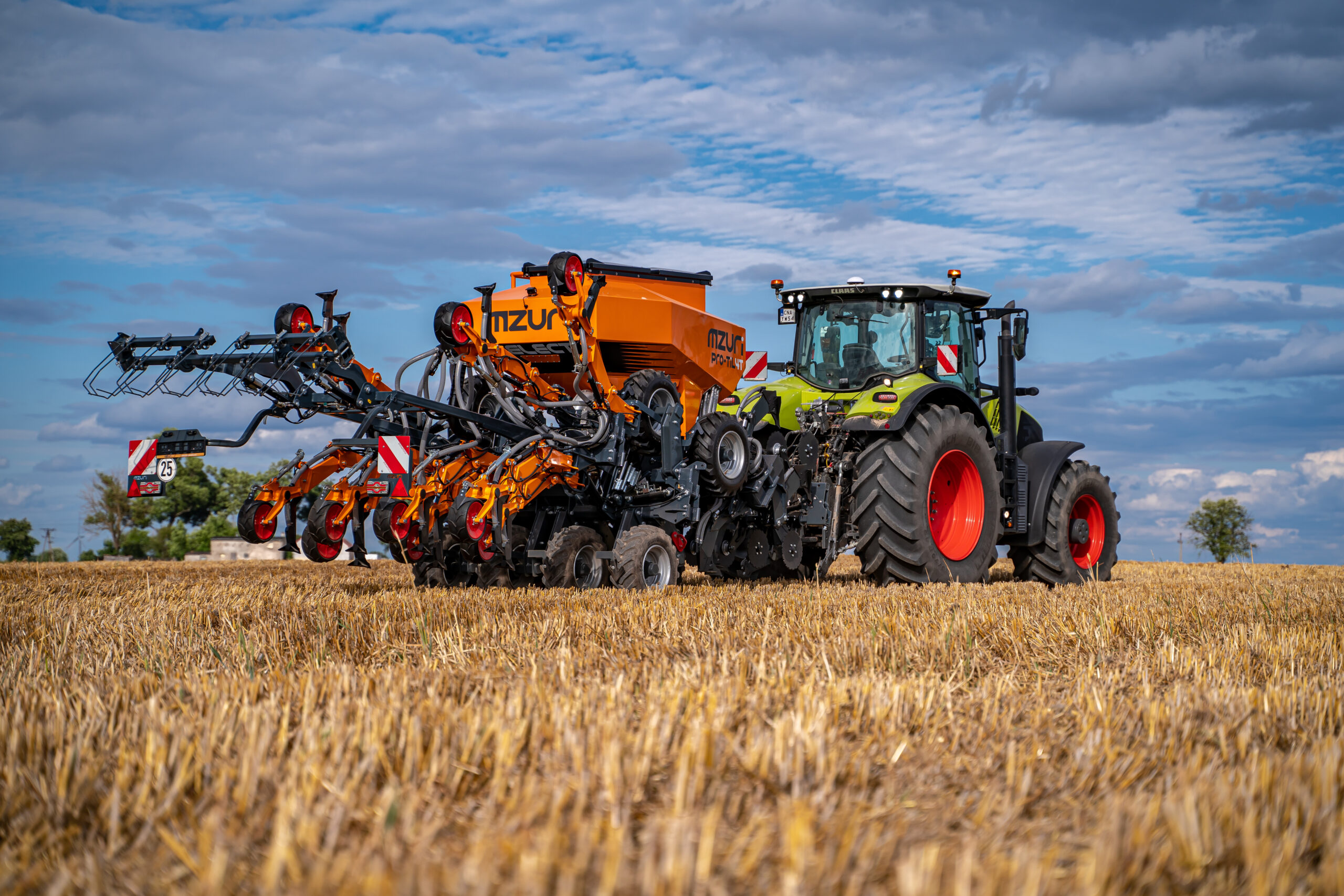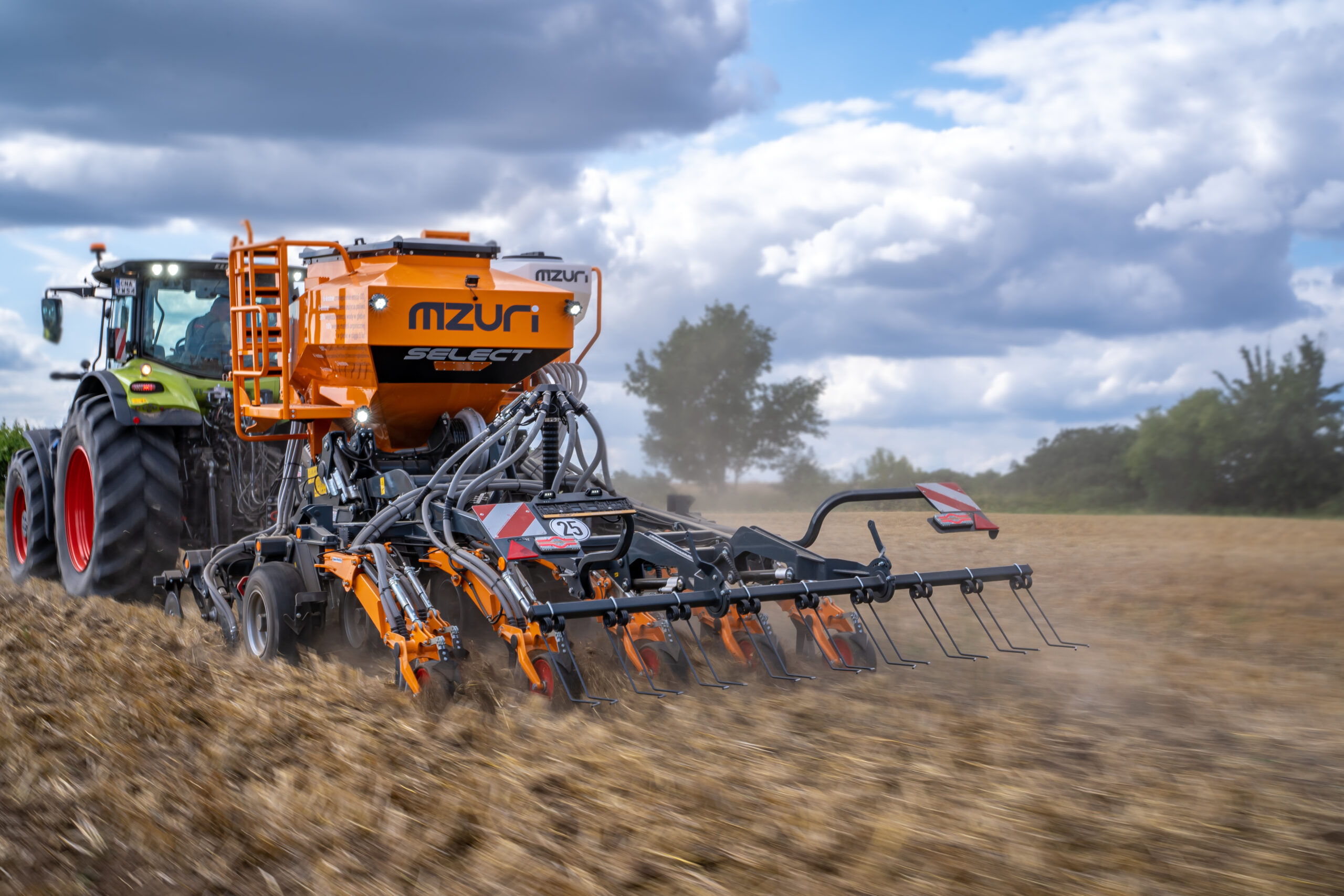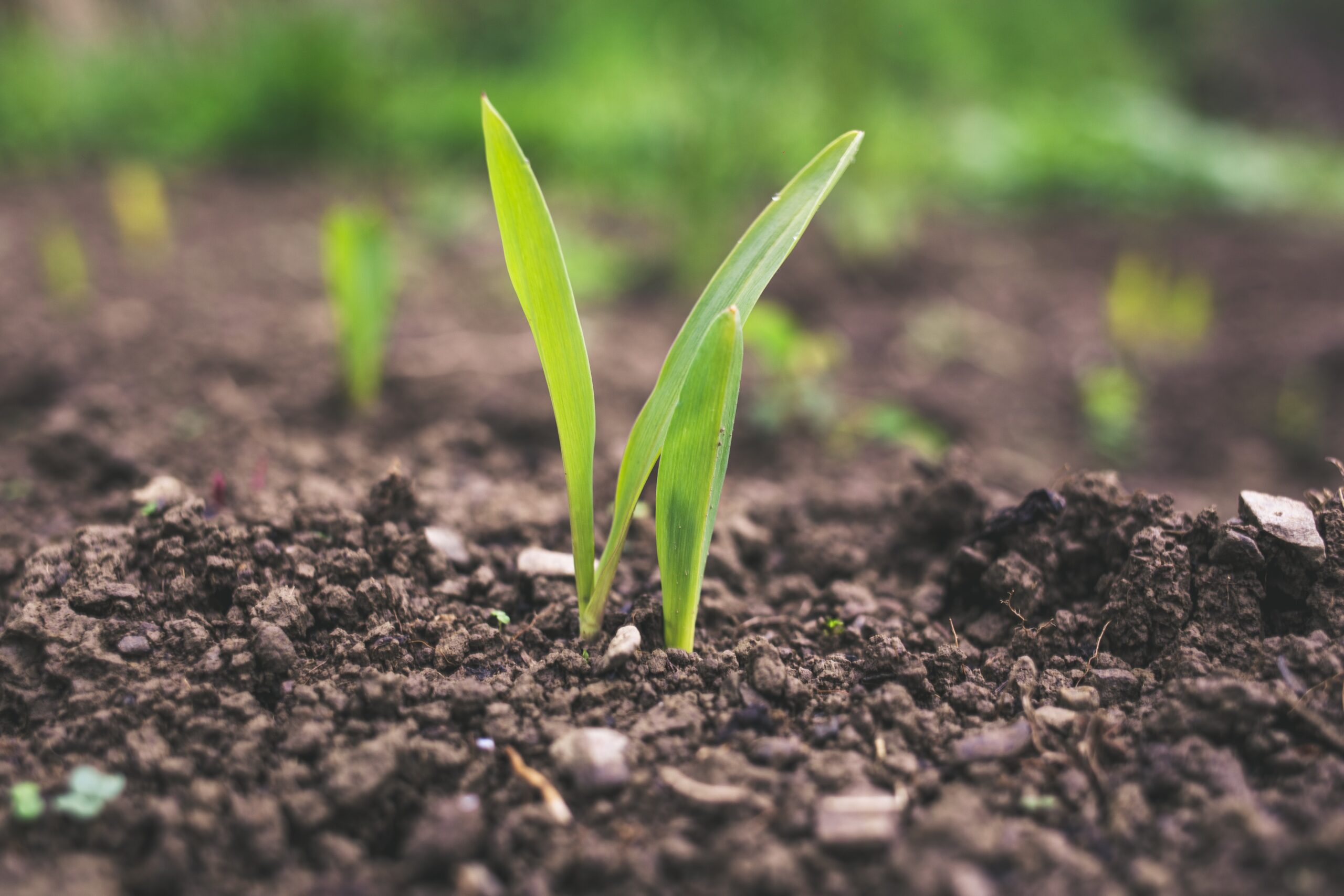For example, in maize, the yield can be the grain, the whole cob or the biomass of the part above ground, while in peas, the yield is the dry grains, immature green seeds, pods or green shoots. Also the characteristics that the yield plant organs should have and which are expected by the farmer, and subsequently by the final user of the crop, are not, and cannot be, unambiguously defined. These depend, for example, on the destination of the crop. Barley animal feed grains should contain as much protein as possible, but malting grains only a limited amount. The expected high gluten content of wheat grain for bread making is unfavourable in flour for biscuit production. High germination capacity of grain is essential for seed material and malt production, but treated indifferently for animal feed quality. Wheat grain quality can be viewed as several groups of characteristics: physical, chemical and biochemical (Figure 1). Grain size, maturity and shape are well expressed by parameters such as thousand grain mass, kernel uniformity and bulk density. No less important are the chemical properties, especially the protein and gluten content. Crucial for the quality of grain for flour production for baking purposes is the activity of amylolytic enzymes. Currently, seed health plays a great role in the assessment of grain quality, regardless of the direction of use. The presence of mycotoxigenic fungi and mycotoxins is considered particularly undesirable.
Yield quality is encoded genetically. It depends on the species, form or variety of the crops. For instance, the quality characteristics in wheat grain are different than in barley grain, and even more so in rapeseed. Winter wheat grain has different properties than spring wheat, and similarly the high-quality or bread varieties differ from feed varieties. Yield quality is also strongly influenced by the environment, mainly soil properties and weather patterns, as well as by cultivation technology. The results of many studies indicate that not only yield but also grain or seed characteristics depend on tillage. Generally, only good seed formation, high weight, uniformity and density encourage high yields.
uzyskanie wysokiego plonu. However, the relationship is not always so obvious. In the case of high plant density or strong tillering or branching, and also resulting in large numbers of ears, husks, pods per unit area, the grain or seed is often smaller in size. Then, their physical quality characteristics may have less value. Also chemical qualities, mainly nutrient content such as protein or gluten, are often negatively correlated with yield. This means that when grain yields are high, the grain contains less protein and gluten.
Several years of my own research on the effect of different tillage methods on the yield of winter cereals and winter rape, described in more detail in the previous issue, indicate that they have little effect on the qualitative physical properties of grain and seeds (Tab. 1). The thousand grain mass of winter forms of wheat and barley as well as winter rape seeds cultivated with Mzuri Pro-Til technology did not differ by more than 0.1 gram from those obtained with the traditional technology with plough tillage, and the thousand grain mass of winter wheat was even 0.5 g higher than that of wheat cultivated without ploughing. Also, the difference in bulk density of grains or seeds was not greater than 0.5 kg.hl-1. Similarly, differences in the size of uniformity of winter cereal grains, irrespective of the tillage method, did not exceed one percentage point. Therefore, the results obtained did not confirm the fears of some agricultural producers that strip tillage has adverse effects on the yield quality. However, comparing the influence of two methods of reduced tillage, full-surface zero tillage and strip tillage on the chemical composition of winter wheat grain, a higher content of protein and gluten was revealed in crop grain cultivated with the Mzuri Pro-Til technology. This difference, as compared with grain obtained from crops sown in rows after reduced ploughless tillage, amounted to 0.2% and 3.5%, respectively, for the content of total protein and wet gluten. This is particularly important because the grain yield in striptill technology was 0.5 t.ha-1 higher than after reduced full-surface zero tillage (see Issue 2/2018). In such a case, the so-called dilution effect is often observed. As mentioned above, protein and gluten content decrease as yield increases. This is due to, among other things, supplying plants, which are a large biomass, with insufficient nitrogen, a component necessary for biosynthesis of protein and its fractions. The special design and operation of the Mzuri implements enable good nutrition of crops with nitrogen throughout their vegetation period. Its first dose is placed together with the seed in a loosened strip of soil at the same time as seed drilling. Then, after the drill, the crop rows are placed in slightly recessed furrows thanks to an appropriately designed drill coulter. This ensures that most of the nitrogen fertiliser granules that are spread for top dressing are placed next to the plants and not between the rows. Dla
A fair crop supply with this nutrient is particularly important for the quality of cereal yield at the final stages of vegetation, i.e. as a result of the application of the last nitrogen dose. Consequently, even at high yields, the grain is rich in protein and gluten. For more information, see the December 2017 issue of Agro Profile agricultural journal.
The effect of Mzuri Pro-Til technology on protein content in winter wheat grain was confirmed under conditions of intensive cultivation, with high fertilisation and full plant protection, as it brought yields of 8-10 t.ha-1, which is no worse than in the conventional or full-surface ploughless tillage. On average, the absolute content of protein in grain obtained in one-pass strip-till technology was 0.6% higher than in wheat grain sown after ploughing, and 0.3% higher than the content found in grain of crops grown without ploughing (Fig. 2). The content of wet gluten was also similar (Fig. 3). Winter wheat grain cultivated with the strip-till technology contained 34.0% of gluten, i.e. 3.2% more than wheat grain after conventional tillage and row sowing. Simultaneous strip-tillage, fertiliser application and seed drilling with the Mzuri implement also increased gluten content in wheat grain in comparison with the reduced full-surface ploughless tillage.
The comparison of winter wheat grain quality obtained after different soil tillage and sowing methods was complemented with tests on mycotoxin content performed at IUNG PIB in Puławy. They did not show any elevated deoxynivalenol (DON) content in grain of wheat grown in strip-till technology in two years with varied weather patterns during spring and summer wheat vegetation. It was at a similar level as in winter wheat cultivated in classical technology with plough tillage and row sowing. Of course, both crops were protected with fungicides, which is and should be the rule on good farms.
The assessment of grain and seed quality was supplemented by determining their germination capacity. This characteristic is unimportant for forage use or in many agri-food industries, but essential in malting, and especially in plant reproduction. The tillage and sowing methods had no significant effect on the germination capacity of winter rape and winter cereal, wheat or barley grains (Tab. 1).
